Abaca Banana (Musa Textilis Nee)
The development of material technology has spawned a new type of material that is built on top of several compilers. This material is called composite material.
Composite consists of several compilers, one of which is fiber. Many types of fibers are being used as composite materials, both natural and synthetic fibers.
Natural fibers as polymer composites are widely used in the field of materials engineering.
Abaca fiber is a natural fiber derived from abaca plant petals after going through fiber separation process.
Abaca plants (Musa Textilis Nee) grow wildly widely in tropical climates such as Indonesia, especially in Aceh.
Further utilization for abaca fiber is as a composite raw material composite of synthetic fiber that has been widely used in industry and in everyday life.
In this study using abaca fiber filler, type of binder used is polyester resin.
Polyester resin is one of the thermoset resins that are easy to obtain and used by the general public as well as small and large scale industries.
This polyester resin also has the ability to bind with natural fibers without causing reaction and gas.
Therefore, polyester resin used in this research In order to make a material of natural fiber composite which has good mechanical properties, it must know the factors that influence in making the composite material.
Based on the above description it is necessary to be researched and developed as a composite material in accordance with the physical properties of mechanical structures that can compete with other materials using natural fibers can be a substitute for synthetic composites and metals.
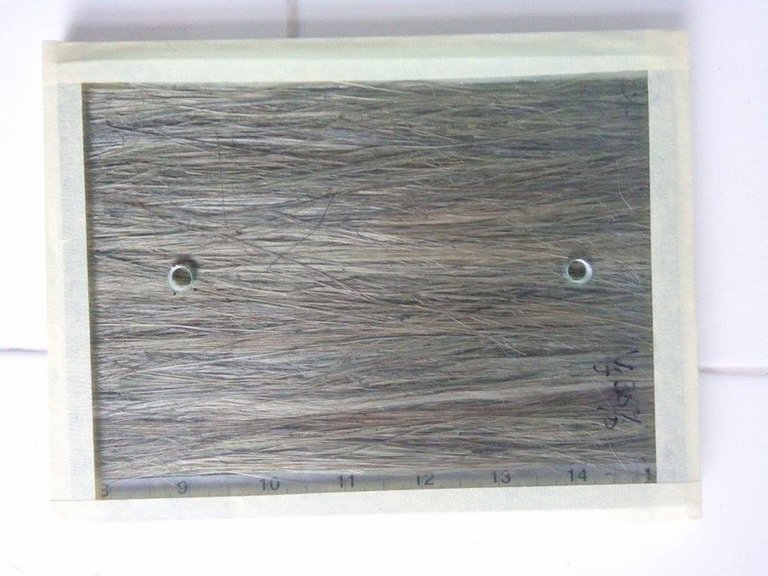
The problems studied in this research are :
Composite fibers use abaca fibers and polyester resin matrices composed of composites, with the addition of volume fraction and the addition of thick variations, and alkali treatment of how the performance of this composite fiber material
This will be the main topic of this research.
Research methodology
Preparation of Materials and Tools :
The materials used in this research are as follows
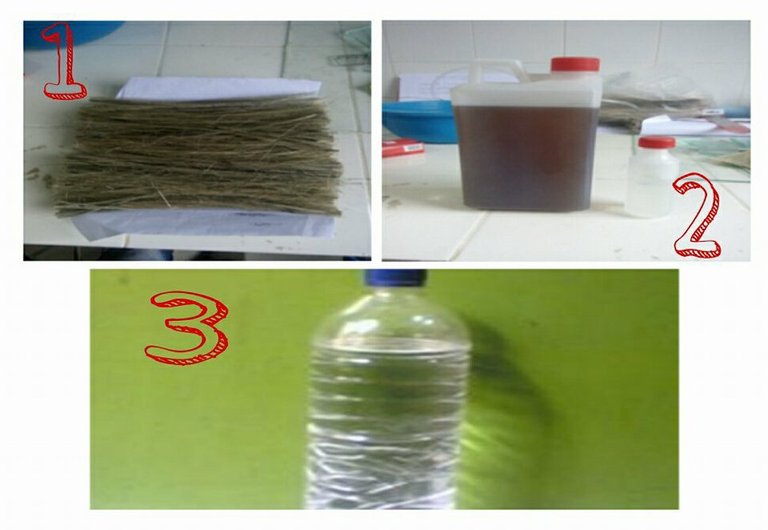
Abaca banana fibers are collected and then soaked using water for the process of hardening then the fiber is dried until the water content becomes <10%.
2. PolyesterThe matrix uses Polyester Resin BQTN type 157 with a catalyst additive which serves as a resin hardener.
3. NaOHNaOH is used to remove dirt or lignin on fibers with a 5% concentration. NaOH is an alkaline solution and seems slippery.
The tools used in this study are as follows
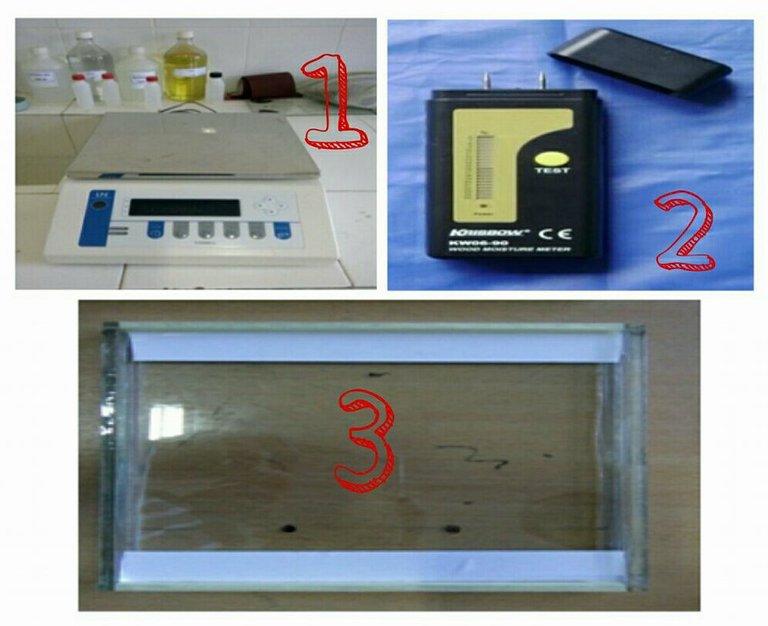
The scales used to weigh fiber and polyester are digital scales.
2. Water Moisture Test Tool.This moisture test tool is used to measure the water content of Abaca banana fiber, with the water content <10%.
3. Glass molds for specimensThe mold is made of clear glass with a thickness of 5mm.
Composite Manufacture
The process of making composite hemp fiber with polyester matrix is as follows:
A. Abaca fiber preparation, for abaca fiber washed first, then put into 5% NaOH solution for 2 hours, 4 hours, and 6 hours, then dried until the water content reaches 10%.
B. After the dry fiber is then carried out the process of making fiber length (0o) random orientation in accordance with the shape of the mold.
C. Printing Measure the manufacture of tensile test specimen with thickness 5mm, mold size 20cm in length, width 15cm and 11mm thickness.
D. Grinding grease on the mold to facilitate the collection of specimens from the mold after experiencing the drying process.
E. The polyester resin is mixed with the catalyst to assist the drying process. The catalyst used is 1% of the amount of polyester resin used.
F. Pour the resin mixture into Abaca banana fiber mold that has been arranged lengthwise, then covered with glass and pressed with a hardener.
G. Closure by using glass that aims to see the voids can be minimized the amount of which is then done using pressing presses.
H. Drying process is done until it is really dry that is 5 - 10 hours and if still not really dry then drying process can be done longer.
Composite Testing
Tests conducted in this study is a tensile test
The tensile test is performed to determine the tensile strength of the composite material. Testing is done by testing machine "Universal Testing Machine" made in japan.
Tensile test specimens in shape according to ASTM D 638-03 type 4 standard are shown in the following figure:
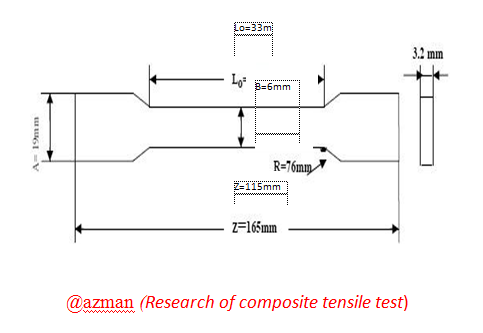
The tensile testing steps in this study are as follows:
A. Measure the length of test and test passers before being tested.
B. Prepare the tensile test machine used.
C. Insert and set millimeter-block paper on the plotter machine.
D. Attach the tensile specimen and make sure it is pinched properly.
E. Run the experimental machine.
F. Once broken, stop the withdrawal process immediately, note the maximum tensile strength and increase in length.
G. Take the plotter machine recording of the withdrawal process contained in millimeter-block paper.
Sample Specimen results on Tensile Test with alkali treatment
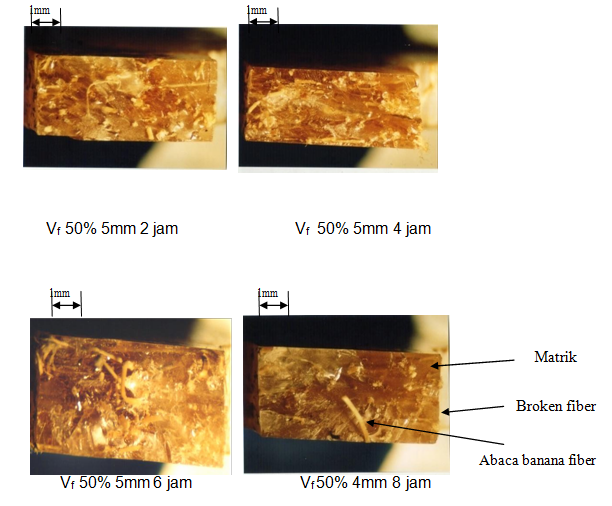
conclusion
This study was conducted as one of the requirements to obtain a bachelor's degree.
This research takes a long time of about 6 months and requires a very large (money) fund for this research process ...
This tensile test, in order that plastic composites with natural fibers can be utilized and developed in the industrial world.
Reference :
Tensile strength of coconut fiber composite - Journal of untad
ANALYSIS OF MECHANICAL PROPERTIES OF COMPOSITE FIBER SUGAR